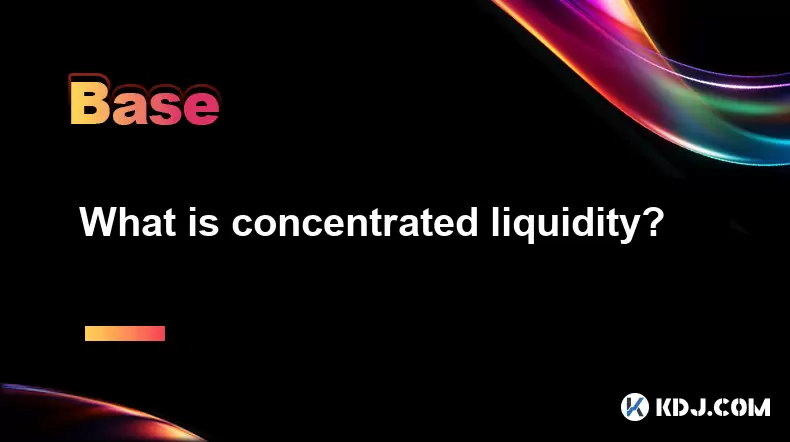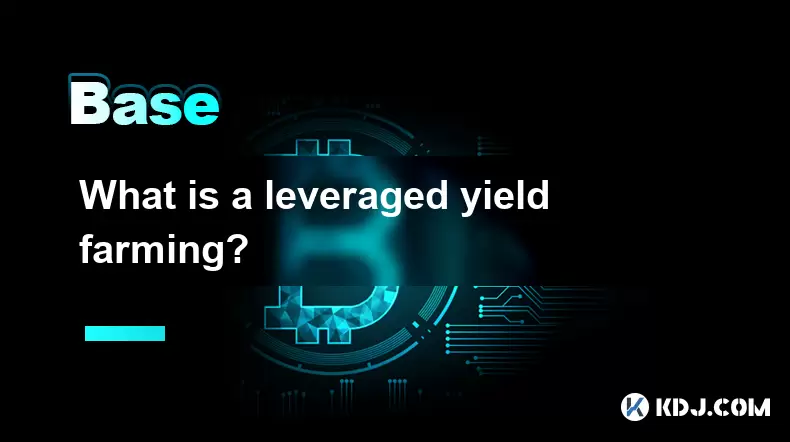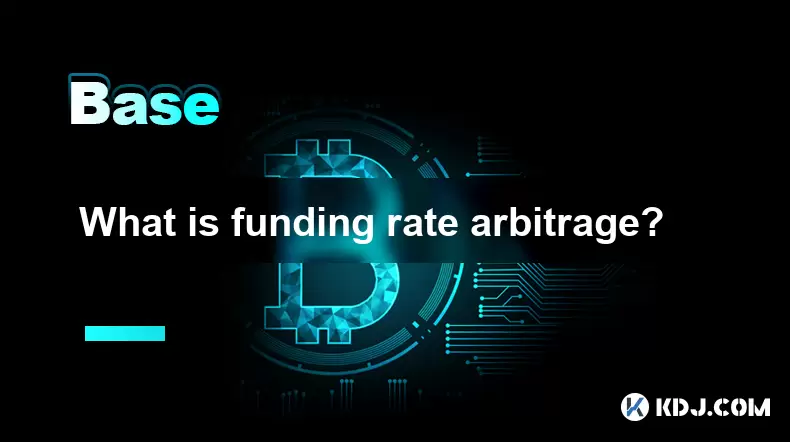-
 Bitcoin
Bitcoin $109,011.2121
-0.90% -
 Ethereum
Ethereum $2,554.1185
-2.06% -
 Tether USDt
Tether USDt $1.0005
0.01% -
 XRP
XRP $2.2311
-2.31% -
 BNB
BNB $658.5491
-0.76% -
 Solana
Solana $150.7662
-3.13% -
 USDC
USDC $1.0000
0.01% -
 TRON
TRON $0.2871
1.22% -
 Dogecoin
Dogecoin $0.1674
-4.20% -
 Cardano
Cardano $0.5832
-3.77% -
 Hyperliquid
Hyperliquid $38.8533
-4.62% -
 Sui
Sui $2.9346
-3.46% -
 Bitcoin Cash
Bitcoin Cash $479.1670
-5.20% -
 Chainlink
Chainlink $13.3735
-3.75% -
 UNUS SED LEO
UNUS SED LEO $9.0432
0.33% -
 Avalanche
Avalanche $18.1550
-4.29% -
 Stellar
Stellar $0.2401
-1.74% -
 Toncoin
Toncoin $2.8152
-3.35% -
 Shiba Inu
Shiba Inu $0.0...01161
-3.82% -
 Litecoin
Litecoin $87.8956
-4.07% -
 Hedera
Hedera $0.1564
-2.39% -
 Monero
Monero $322.9969
-0.77% -
 Polkadot
Polkadot $3.4525
-5.04% -
 Dai
Dai $1.0000
-0.02% -
 Ethena USDe
Ethena USDe $1.0001
-0.01% -
 Bitget Token
Bitget Token $4.5010
-2.55% -
 Uniswap
Uniswap $7.3786
-3.93% -
 Pepe
Pepe $0.0...09810
-8.27% -
 Aave
Aave $270.8275
-3.65% -
 Pi
Pi $0.4843
-4.64%
What is concentrated liquidity?
Concentrated liquidity in DeFi allows providers to allocate funds within specific price ranges, boosting capital efficiency and fee earnings on platforms like Uniswap v3.
Jul 04, 2025 at 11:56 am

Understanding Concentrated Liquidity in Decentralized Finance
Concentrated liquidity refers to a mechanism used in decentralized exchanges (DEXs), particularly those built on the Automated Market Maker (AMM) model, where liquidity providers (LPs) can allocate their assets within a specific price range rather than across the entire possible price curve. This innovation was popularized by Uniswap v3, which introduced this feature to improve capital efficiency for liquidity providers.
In traditional AMMs like Uniswap v2, liquidity is spread uniformly across all possible price points from zero to infinity. However, in practice, most trading activity occurs around the current market price. Concentrated liquidity allows LPs to focus their funds into ranges where they expect the asset pair's price to fluctuate, thereby increasing their exposure and earning more fees per unit of capital deployed.
How Does Concentrated Liquidity Work?
The core concept behind concentrated liquidity involves customizable price ranges for liquidity provision. Instead of depositing tokens across an infinite price spectrum, users define a lower and upper price bound for their deposited assets. Within that range, the protocol acts as a standard constant product market maker (x * y = k), but outside of it, the liquidity is effectively inactive.
For example, if you're providing liquidity for the ETH/DAI pair, you could choose to concentrate your liquidity between $2,000 and $3,000 per ETH, assuming you believe the price will remain within that range for a certain period. As long as the price stays within your specified bounds, your capital is actively earning trading fees. If the price moves beyond either bound, your position becomes inactive, and only one asset remains in your wallet.
This system requires active management or strategic planning, as misjudging price movements can result in reduced fee earnings or even impermanent loss if not managed properly.
Key Advantages of Concentrated Liquidity
- Increased capital efficiency: By focusing funds into active price ranges, liquidity providers can earn more fees relative to their total deposited capital.
- Greater control over risk exposure: Providers can avoid volatile price zones or hedge against large swings by adjusting their positions accordingly.
- Customization of strategies: Users can implement various strategies such as range orders, delta-neutral hedging, or volatility betting based on their market outlook.
However, these advantages come with added complexity. Unlike passive liquidity provision in earlier versions of AMMs, concentrated liquidity demands a deeper understanding of market behavior and potentially frequent rebalancing to maintain optimal performance.
Operational Guide: How to Provide Concentrated Liquidity on Uniswap v3
To begin providing concentrated liquidity, follow these steps:
- Connect your wallet: Use MetaMask, WalletConnect, or another supported wallet to connect to the Uniswap interface.
- Select a token pair: Choose the two tokens you want to provide liquidity for (e.g., ETH/USDC).
- Choose a fee tier: Uniswap offers different tiers (0.05%, 0.3%, and 1%) depending on the volatility of the pair.
- Set your price range: Adjust the lower and upper bounds based on your expectations for future price movement.
- Deposit your assets: Confirm the transaction through your wallet and monitor your position via the Uniswap dashboard or third-party tools like Zapper or NFTX.
Each liquidity position is represented as a non-fungible token (NFT), giving users full ownership and portability of their liquidity positions.
Potential Risks and Considerations
While concentrated liquidity can be highly rewarding, it also introduces several risks:
- Impermanent loss: If the price moves significantly outside your set range, you may suffer losses compared to simply holding the assets.
- Active monitoring required: To maximize returns, you must continuously adjust your price ranges in response to market conditions.
- Gas costs: Rebalancing positions frequently can lead to high Ethereum gas fees, especially during network congestion.
These factors make concentrated liquidity more suitable for experienced participants who are comfortable managing dynamic portfolios and assessing market trends.
Use Cases Beyond Simple Liquidity Provision
Concentrated liquidity has opened up new avenues for DeFi strategies:
- Range orders: Users can simulate limit orders by setting tight price ranges above or below the current market price.
- Yield farming: Some protocols allow concentrated liquidity positions to be deposited into yield farms for additional rewards.
- Arbitrage opportunities: Sophisticated traders use concentrated liquidity to capture arbitrage between DEXs and centralized exchanges.
These advanced applications demonstrate how concentrated liquidity serves as a foundational building block for next-generation DeFi products and services.
Frequently Asked Questions (FAQ)
Q: Can I lose money with concentrated liquidity?
Yes, if the price of the assets you’re providing liquidity for moves significantly outside your chosen range, you may experience impermanent loss, and your returns might underperform a simple hold strategy.
Q: Is concentrated liquidity suitable for beginners?
It is generally recommended for users with some familiarity with DeFi concepts, including liquidity pools, impermanent loss, and gas optimization, due to its complexity and need for active management.
Q: How do I track my concentrated liquidity positions?
You can view your positions directly on the Uniswap V3 interface or use platforms like Zerion, Zapper, or Blockchair, which support NFT-based liquidity tracking.
Q: Are there alternatives to Uniswap for concentrated liquidity?
Yes, other DEXs such as SushiSwap’s Trident and Camelot DEX on Arbitrum have adopted similar concentrated liquidity models, offering alternative user experiences and features.
Disclaimer:info@kdj.com
The information provided is not trading advice. kdj.com does not assume any responsibility for any investments made based on the information provided in this article. Cryptocurrencies are highly volatile and it is highly recommended that you invest with caution after thorough research!
If you believe that the content used on this website infringes your copyright, please contact us immediately (info@kdj.com) and we will delete it promptly.
- Sui Price Surges Amid Lion Group's Treasury Move: What's Next?
- 2025-07-04 16:30:13
- BLAST Price Bounces Back After Token Unlock: Is the Rally Real?
- 2025-07-04 17:10:16
- Wormhole, Coinbase, and Interoperability: A New Era for Crypto?
- 2025-07-04 16:30:13
- Neo Pepe Coin ($NEOP): The Crypto Meme Coin Aiming to Eclipse Bitcoin & Ethereum?
- 2025-07-04 16:50:12
- Bitcoin Wallet Inactivity Ends: Whale Moves $1B+ BTC After 14 Years
- 2025-07-04 16:50:12
- Bitcoin Reserves, Institutional Adoption, and Cryptocurrency Strategy: A New Era
- 2025-07-04 17:10:16
Related knowledge

What is a user-generated content (UGC) NFT platform?
Jul 04,2025 at 01:49pm
Understanding the Concept of a UGC NFT PlatformA user-generated content (UGC) NFT platform is a digital marketplace or ecosystem where users can create, mint, and trade non-fungible tokens (NFTs) that represent ownership of original digital content they produce. Unlike traditional NFT platforms where creators often include professional artists or develo...

What is a token generation event (TGE)?
Jul 04,2025 at 07:14am
Understanding the Basics of a Token Generation Event (TGE)A Token Generation Event (TGE) refers to the process through which a blockchain project creates and distributes its native tokens to investors, participants, or stakeholders. This event is often associated with new cryptocurrency projects launching on platforms like Ethereum, Binance Smart Chain,...

What is a block explorer API?
Jul 04,2025 at 05:07am
Understanding the Role of a Block Explorer APIA block explorer API is a crucial interface that enables developers and users to interact programmatically with blockchain data. Unlike traditional APIs used in web services, a block explorer API specifically provides access to blockchain-related information such as transaction details, wallet balances, bloc...

What is a leveraged yield farming?
Jul 04,2025 at 09:36am
Understanding Leveraged Yield FarmingLeveraged yield farming is a more advanced form of yield farming, which itself is a popular method in the decentralized finance (DeFi) ecosystem to earn returns by providing liquidity to various protocols. In traditional yield farming, users deposit tokens into a DeFi platform and earn rewards in return, often in the...

What is open interest in derivatives?
Jul 03,2025 at 02:49pm
Understanding Open Interest in DerivativesOpen interest is a critical metric used in the cryptocurrency derivatives market, particularly when analyzing futures and options contracts. It represents the total number of outstanding contracts that have not been settled or closed by either party involved. Unlike trading volume, which counts all trades made i...

What is funding rate arbitrage?
Jul 04,2025 at 11:43am
Understanding Funding Rate Arbitrage in the Cryptocurrency MarketFunding rate arbitrage is a trading strategy employed by crypto traders to exploit differences in funding rates across various perpetual futures exchanges. In perpetual contracts, funding rates are periodic payments made between long and short traders depending on whether the price of the ...

What is a user-generated content (UGC) NFT platform?
Jul 04,2025 at 01:49pm
Understanding the Concept of a UGC NFT PlatformA user-generated content (UGC) NFT platform is a digital marketplace or ecosystem where users can create, mint, and trade non-fungible tokens (NFTs) that represent ownership of original digital content they produce. Unlike traditional NFT platforms where creators often include professional artists or develo...

What is a token generation event (TGE)?
Jul 04,2025 at 07:14am
Understanding the Basics of a Token Generation Event (TGE)A Token Generation Event (TGE) refers to the process through which a blockchain project creates and distributes its native tokens to investors, participants, or stakeholders. This event is often associated with new cryptocurrency projects launching on platforms like Ethereum, Binance Smart Chain,...

What is a block explorer API?
Jul 04,2025 at 05:07am
Understanding the Role of a Block Explorer APIA block explorer API is a crucial interface that enables developers and users to interact programmatically with blockchain data. Unlike traditional APIs used in web services, a block explorer API specifically provides access to blockchain-related information such as transaction details, wallet balances, bloc...

What is a leveraged yield farming?
Jul 04,2025 at 09:36am
Understanding Leveraged Yield FarmingLeveraged yield farming is a more advanced form of yield farming, which itself is a popular method in the decentralized finance (DeFi) ecosystem to earn returns by providing liquidity to various protocols. In traditional yield farming, users deposit tokens into a DeFi platform and earn rewards in return, often in the...

What is open interest in derivatives?
Jul 03,2025 at 02:49pm
Understanding Open Interest in DerivativesOpen interest is a critical metric used in the cryptocurrency derivatives market, particularly when analyzing futures and options contracts. It represents the total number of outstanding contracts that have not been settled or closed by either party involved. Unlike trading volume, which counts all trades made i...

What is funding rate arbitrage?
Jul 04,2025 at 11:43am
Understanding Funding Rate Arbitrage in the Cryptocurrency MarketFunding rate arbitrage is a trading strategy employed by crypto traders to exploit differences in funding rates across various perpetual futures exchanges. In perpetual contracts, funding rates are periodic payments made between long and short traders depending on whether the price of the ...
See all articles

























































































